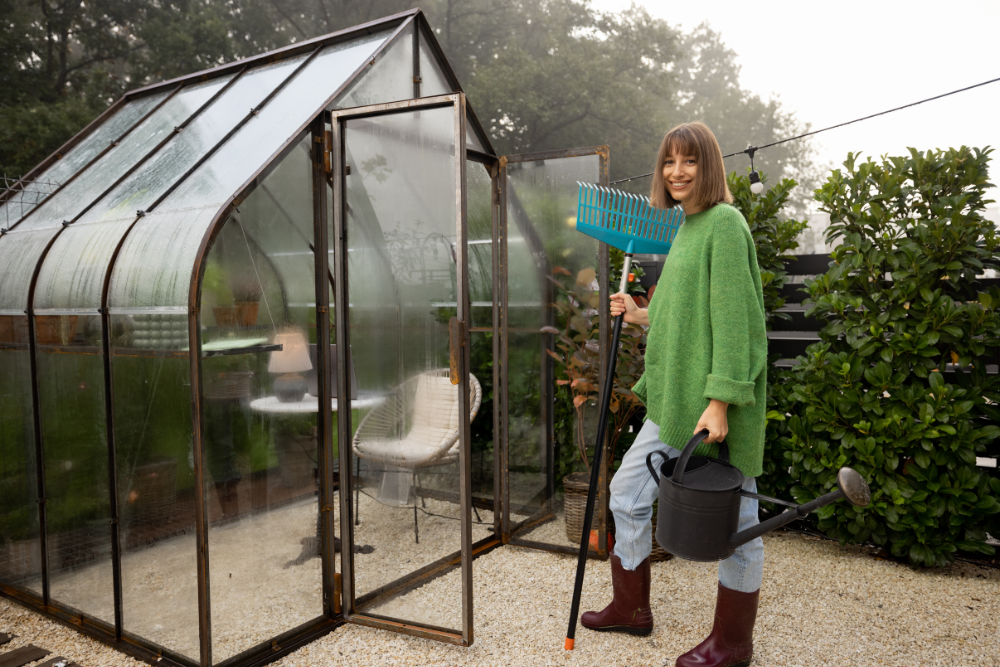
The Lawn in February
Avoid walking on frosty lawns!
Mowing
Grass starts growing at 41 degrees F. So you could be mowing as long as the lawn is dry. Adjust blade at highest level.
Re-cut or repair ragged or damaged lawn edges.
Sowing new lawn?
Too early yet, but if weather allows, start preparation. Dig over/remove weeds. As Mar/Apr approaches, rake and firm ready for sowing when conditions allow.
Buying Turf – prepare ground as above.
Fallen leaves on lawn?
Sweep off in dry weather to avoid them rotting in the grass sward.
Water laying on lawn?
Use a fork to drain water. Shake in a mix of sharp sand and garden compost to improve drainage.
Remember maintenance of mowers/other garden equipment – might need them fairly soon!
Autumn feed given? No? Then you can always use a winter feed in early Feb.
Towards end of month consider a Lawn revivor/moss killer, if moss is a problem.
Lawn Scarifying
Using a scarifying rake may be useful if you didn’t get to it in winter.
The Flower Garden
Crowded perennials plants in your borders? Lift, split and re-plant as weather allows.
Winter blooming snowdrops and aconites, will be fading at the end of month, so if the clumps are getting large, dig up, split and re-plant.
Growing Summer flowering bulbs this year?
For growing in containers, plant towards the end of month in the conservatory for early start.
Sow annual and perennial seeds such as antirrhinum, begonia, dahlia and geranium that need a long growing season to flower.
Sweet peas
Now’s the time to sow if previously not started. Sow individually in tall pots to produce the best plants, as they need a long ‘root-run.’
The Vegetable Plot
February is the month that things start to ‘kick off’ in the vegetable garden with the first sowings being made and clearing up of the existing patch to ready for the new season.
Let’s take a look at some things to consider:
It’s time to think about sowings of greenhouse items that require a long growing season like early tomatoes, aubergines, sweet peppers and chillis. Consult the seed catalogues, there are always new, enticing varieties to try!
Potatoes
Should you be growing early potatoes this year, start ‘chitting’ the tubers to get them into growth. Stand the small seed potato tubers in containers (egg boxes are ideal) and place in a light, cool, frost-free place for the small shoots to form.
Soil
It’s a good idea to apply organic matter such as garden compost or well-rotted farm-yard manure to growing areas, (having removed weeds) to prepare the plot for later sowings/plantings.
A good investment is a small soil testing kit to check soil acidity and determine whether you need lime prior to planting to stop the soil becoming too acid for optimum growth.
Continue harvesting winter vegetables and make sure you remove any decaying leaves. You don’t want to make it easy for those ‘pesky pests’ this summer!
The Fruit Garden
February is a busy month in the fruit garden!
There is still time to plant fruit if you are starting a new patch or replacing failed plants.
Top Fruit
‘Top’ fruit is the horticultural term for fruit trees. For apples and pears, this is your last chance to carry out pruning whilst the trees are still dormant.
Cane Fruit
‘Cane’ fruit includes raspberries, gooseberries and the currant family. It’s time to complete their pruning too.
It’s not too late to be planting any of the above trees or bushes, but get your order in NOW!
Soft Fruits
‘Soft fruits’ are not ‘woody’ plants and the best example is the luscious strawberry!
You can encourage early fruiting on existing plants by covering some plants with cloches or garden fleece. Alternatively lift and pot a few plants and bring them on in the greenhouse.
Rhubarb – plant new plants or split up unruly existing clumps.
Finally, if you have outdoor apricots, nectarines or peaches, towards the end of the month if the plants are in flower bud, it’s wise to cover them with fleece to avoid frost damage.
Apply garden compost or farmyard manure around the stems of your fruit to act as a fertile mulch.
Garden Shrubs
Time to get out there with the secateurs to prune dormant plants like roses, rhododendrons and winter flowering shrubs. Wisteria too can now be pruned.
Apply fertilizer around your shrubs and roses. Use a ‘slow-release’ type to supply nutrients throughout the summer.


